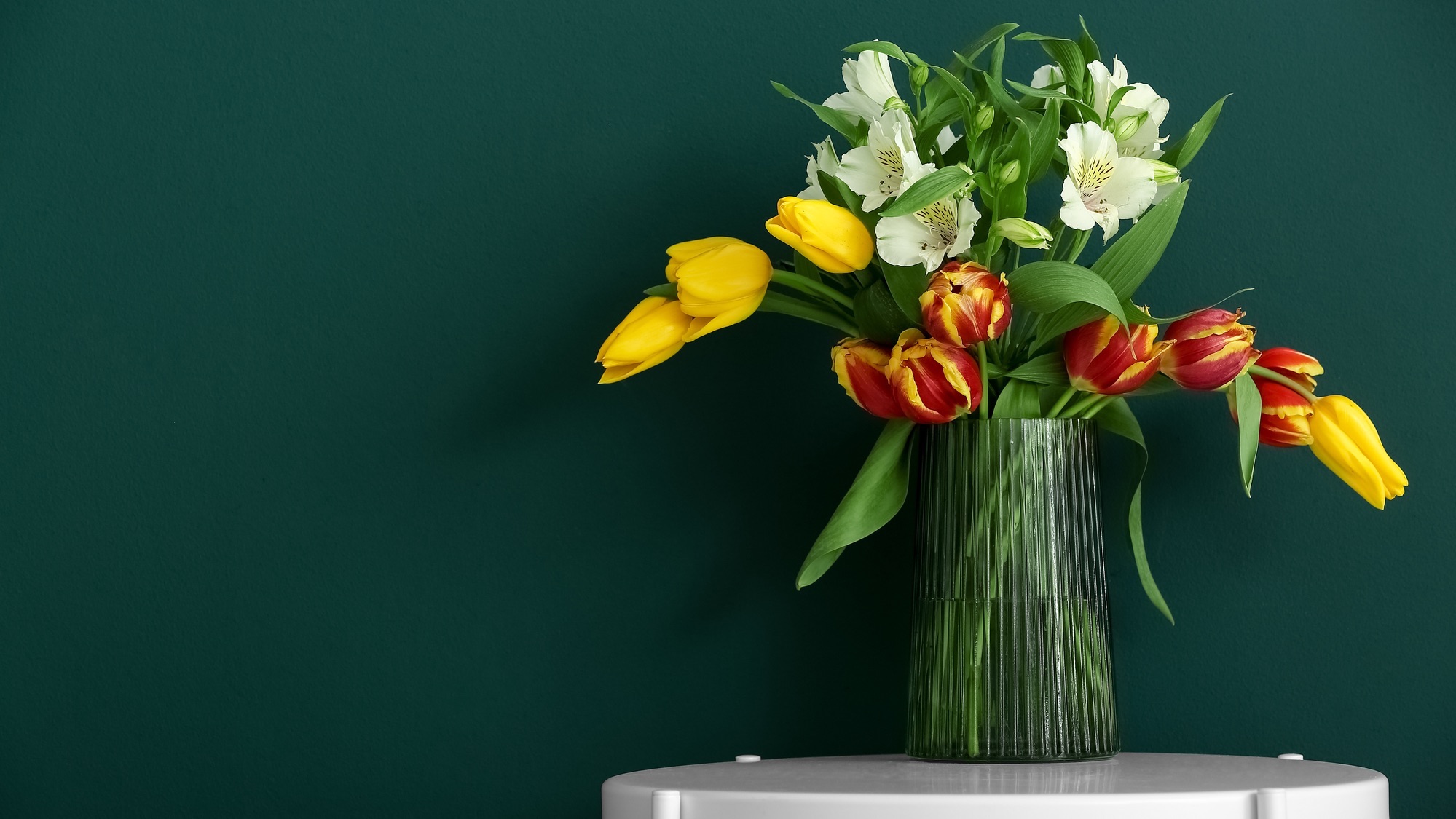
Mix a DIY plant food or pop a penny in the water to extend your flowers’ life. Image: DepositPhotos
Bringing a vibrant bouquet into your home is not just about the instant beauty—these flowers can maintain their freshness and continue to brighten your space with the right care. Utilizing simple, scientifically backed methods, you can extend the vitality and appearance of your cut flowers. Here’s how you can keep your floral arrangements looking fresher longer.
Selecting robust varieties
Multiple factors determine the quality of cut flowers, including temperature, humidity, ethylene levels, and microbial activity. However, selecting robust varieties ensures that your bouquet remains visually appealing longer and offers more value for your investment. Flowers like carnations and chrysanthemums have naturally longer lifespans due to their hardier structures and slower aging processes, allowing them to withstand typical environmental stress better than more delicate varieties. These flowers can have a vase life for up to three weeks:
Chrysanthemum
Carnation
Alstroemeria
Orchid
Freesia
Lily
Ranunculus
Zinnia
Gladiolus
Removing lower leaves
Once you get home with your bouquet, the first step is to prepare them for vase life. Remove any leaves that would sit below the water line in your vase. Leaves in the water can rot quickly, leading to bacterial growth that can block the stems and reduce water uptake, causing the flowers to wilt prematurely.
Cutting stems
To maintain the fresh appearance of your flowers, start by cutting the stems properly to ensure optimum water uptake. Use a sharp, sterilized pair of scissors or a knife to make a clean cut at a 45-degree angle about one inch from the bottom of each stem. This angled cut increases the surface area for water absorption and prevents the ends from resting flat at the bottom of the vase, which can hamper water uptake.
Preventing air bubbles
Avoiding air bubbles that can block the water flow through the stem is crucial. After cutting, place the stems immediately in water. For plants like poinsettias and poppies that emit milky sap, briefly heat the cut ends with a flame or dip them in boiling water to seal the sap and ensure the stem remains clear for water intake.
DIY plant food
Commercial plant foods are formulated to acidify the water, provide nutrients, and prevent microbial growth. But you don’t need to rely on these products–you can create a simple homemade solution. Mix 1 teaspoon of sugar, a few drops of bleach, and 2 drops of lemon juice or vinegar into each liter of vase water, to keep the water fresh and provide the necessary carbohydrates and acidic environment.
Regular water changes
To keep your flowers fresh, it’s important to change the water in the vase every two days. This step helps prevent bacteria from building up, which can cause the flowers to wilt faster. When changing the water, use lukewarm water as it allows the stems to take up water more efficiently, keeping your flowers looking beautiful for longer.
Location
To ensure the longevity of your flowers, keep them in a cool area shielded from drafts and direct sunlight. The cooler temperature will help the flowers last longer, so placing them in a part of your home that remains consistently cool throughout the day is ideal. Additionally, avoid putting your bouquet near fruits or vegetables in the kitchen, as the ethylene gas emitted by these foods can degrade the blooms.
Other things to know
How do you revive flowers that begin to wilt?
If the flowers begin to wilt, re-cut the stems, change the water, and add fresh plant food. Sometimes, simply cutting the stems again and providing fresh water can reinvigorate flowers that have started to droop.
Are pennies good for flowers?
Adding a pre-1982 penny to your flower vase can be beneficial due to its high copper content, which has antibacterial properties. This copper acts as a fungicide, helping prevent bacteria and fungi growth and thus keeping flowers fresh longer. However, while it helps keep the water clean, it doesn’t directly make flowers like tulips bloom faster.
Does sugar help flowers last longer?
Adding sugar to vase water can extend the life of cut flowers by providing essential nutrients and mimicking their natural environment. While sugar nourishes the flowers, it can also foster bacterial growth, potentially shortening their lifespan unless it’s counteracted with antibacterial agents like vinegar or commercial preservatives.
>>> Read full article>>>
Copyright for syndicated content belongs to the linked Source : Popular Science – https://www.popsci.com/diy/how-to-keep-bouquets-looking-fresh/































